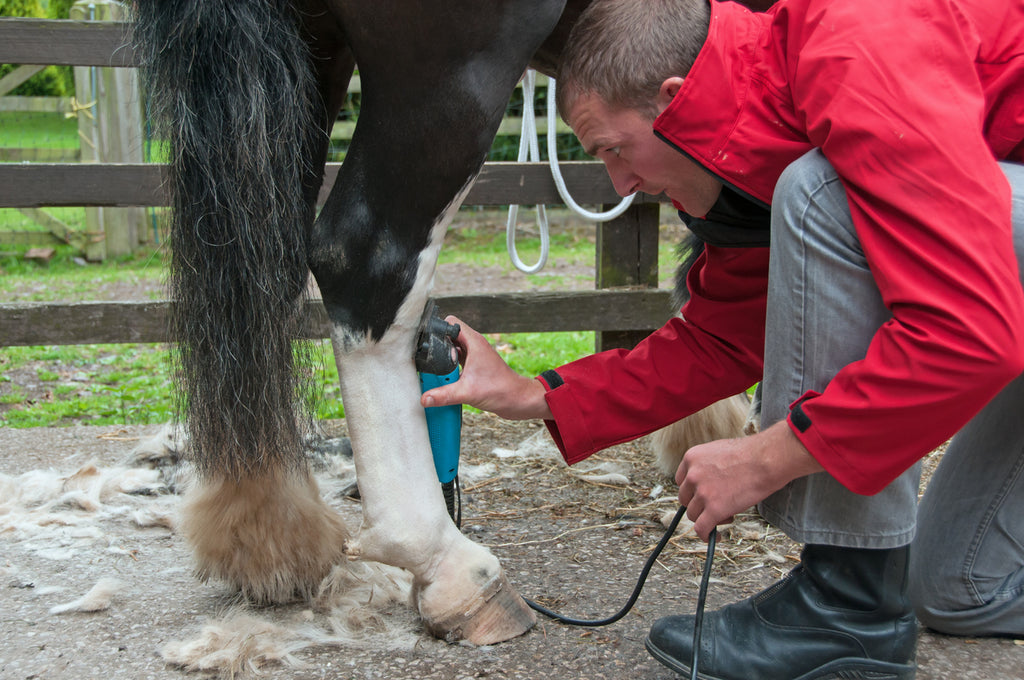Body Clipping Horses
“Body clipping” is the term used to describe trimming large sections of your horse’s coat so that they will sweat less and dry off faster. While it can be a lot of work, body clipping can be a fun way to spend time with your horse. And you’ll really enjoy the sense of accomplishment that comes from knowing you did it all on your own.
Body clipping is a skill that requires practice and patience. You may not be great at it right away, but don’t be discouraged, this is a really valuable skill that will prove useful throughout your life as a rider. And remember its just hair and it will grow back! If you want to get better fast, have your trainer, barn manager or an experienced barn mate help give you tips and pointers as you’re learning. You can also offer to clip your friends’ horses for free (just make sure they know you’re still learning!)
Clipping Tips
Body clipping can be stressful for some horses, so be sure to choose an area that’s as calm and quiet as possible.
Decide what type of clip your horse needs and how much hair you are going to take off. Factors to consider include how much work your horse will be doing, and where and how much he normally sweats.
There are a lot of factors to consider when deciding which body clippers to buy, including your budget, how often you’ll use them, and how many horses you have to clip at any given time.
- For the really big jobs, a heavy-duty clipper with a combo blade system, like the Oster Variable Speed Clipmaster, Lister Star Clipper, or Andis Cordless Body Clipper is a good bet.
- If you only have to clip your horse once or twice a season, consider the Andis AGC Super 2 Speed Clipper, which allows you the versatility to switch from the body-clipping capable Andis Ultraedge replacement blades, down to surgical-precision 40 blades, ideal for show trims.
For the closest clip available, it’s best to go against the grain of the hair. For a more modest trim, some riders prefer to clip with the grain of the hair, as this takes off significantly less hair.
It’s important to have your blades sharpened regularly. Dull blades catch the hair and tug at the skin, which your horse will definitely not enjoy.
Clipping will be a much more pleasant experience if your horse is clean. You’ll be able to clip faster as the blades glide along, instead of getting hung up on a dirty coat. Also, clipping dirty hair will dull your blades much more quickly.
Check the temperature of your blades regularly throughout the job. Clipper blades usually got hot much faster than the clipper body, so you may not notice the blades are hot, but your horse may be quite uncomfortable.
- Cooling fluid, like Oster cool lube, is a great way to help control the temperature of your blades. You can also stop and turn the clippers off for a period to let them cool.
- Alternately, if you have an extra set of blades, you can simply swap back and forth, letting one pair cool out while you keep working.
Clipping in stages is a great idea, especially for larger jobs. Switch back and forth from the left to right side, and build up from a belly clip to a low trace, then to a high trace, and on to a blanket, and eventually a saddle clip, moving to a full body clip at the end. Keeping things even on both sides allows you to stop for a few hours, or the day, to give your horse (and yourself) a break, without having to worry that he’ll look terribly lopsided.
- With this same thought in mind, it’s always better to start low and work your way up. You can always take more off, but you can’t add it back on (fortunately horse “toupees” only exist in the tail world!)
There is nothing wrong with asking for help. If your horse is spooky or fidgety, it’s best for your comfort, and his safety, to have someone help you hold him.
Once your horse is clipped, you’ll want to make sure you keep him properly blanketed through the remainder of the cold weather.
Like most things in the horse world, there are a lot of different ways to clip. The most important thing is that you and your horse are comfortable, happy and safe.
Happy Clipping!
Common Types of Body Clips
Pony Clip/Strip Clip/Belly Clip – Hair is removed from under the chin, down the under part of the neck, between the front legs and along the length of the underside of the barrel. Minimal hair removal makes this great for horses and ponies in light work.
Chaser/Trace Clip – Can be classified as “low” or “high,” depending on how much hair is removed. Typically, a wide band of hair is clipped from under the chin, along the neck, down the barrel and on to the flank. The entire belly is clipped bare, as is a generous area around the flank. The back, legs and face remain unclipped. This clip is ideal for horses in light to moderate work, and those who need more coverage as a result of lots of time spent outdoors.
Blanket Clip – Named for the fact that it looks like the horse is wearing a blanket (or, more precisely, a quarter sheet),. This clip takes the hair down all through the neck, shoulder, belly and flank, like the Trace Clip, with additional hair removed all the up through and over the withers. Legs and face are usually left with full hair growth. Believed to help sore-backed horses’ back muscles stay warmer and looser.
Hunter Clip – Named for field hunters, this clip takes down all the hair except for the legs and an area on the back in the shape of an all-purpose English saddle. The long leg hair was designed to protect field hunter’s legs, while the extensive clip job helped the keep cool, even on long gallops.
Full Body Clip – All the hair is clipped, from the coronet band up to the withers, and from the nose back to the tail. Ideal for horses in very hard work all winter, and those that will be traveling to warmer climates for winter competitions.

